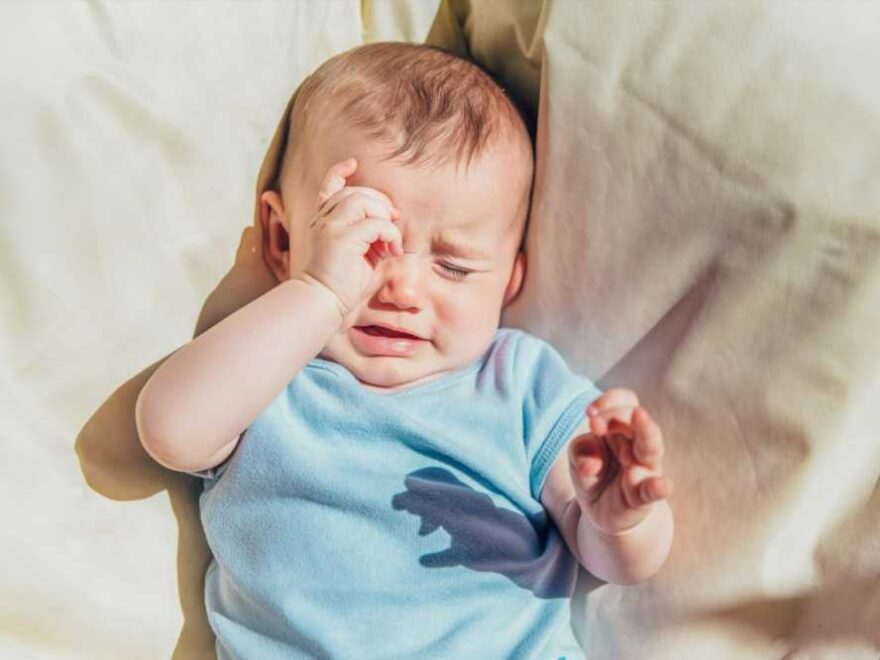YOU might have heard of RSV – or respiratory syncytial virus – as it's one of the most common winter illnesses, especially for children.
Symptoms are cold-like – a runny nose, sneezing and wheezing – and tend to run their course within a week or two.

Most children will actually have had an RSV infection by their second birthday, according to the NHS.
But experts warn that this oh-so-common virus can become deadly to the most vulnerable among us, especially tiny babies.
So it's important to be able to spot signs of RSV in your little one and to know when it's time to seek medical attention.
Ex-paramedic Nikki Jurcutz, who's behind the baby and child fist aid page Tiny Hearts Education, recently shared a video of a nine-week-old to show what symptoms look like in a tot that small.
Read more on RSV

Lifesaving RSV vaccine approved in UK for the first time – are you eligible?

From the Pirola variant to RSV – 7 viruses in circulation and how to spot them
"This is a reminder that vulnerable newborns are at risk of catching [RSV]," she wrote on the clip.
The tiny baby is shown coughing wheezily and its stomach seems to dip in under its ribs every time it lets one out.
According to the Centers for Disease Control and Prevention (CDC), typical RSV symptoms include:
- A runny nose
- Coughing
- Wheezing
- Sneezing
- A decreased appetite
- Fever
Most read in Health
 BRAIN BOOST
BRAIN BOOST
Seven daily habits to improve memory – from dressing in dark to taking nap
 999 DRAMA
999 DRAMA
Paramedics save man in front of Anthony Joshua as he arrives for Who Cares Wins
 TELL YOU THE TOOTH
TELL YOU THE TOOTH
The 7 things your teeth can tell you about your health & when to panic
 SWEET RELIEF
SWEET RELIEF
I tested 4 popular gadgets to relieve period pain & found 2 clear winners
You'll know it's time to seek help for your little one if they show signs of respiratory distress.
This is a life-threatening condition that prevents enough oxygen from getting to the lungs and into the blood.
Nikki advised parents to know how to spot this red flag so they can head to the hospital.
The second part of the video shows the same little baby wheezing and struggling to draw a breathe.
The baby's tummy makes a sucking motion every time it pulls in air – a typical sign of respiratory distress.
You might be able to see this sucking motion at your little one's neck – called a tracheal tug – or under their ribs, which is called a intercostal retraction.
The signs of respiratory distress to know
- Retractions
- Abnormal noises
- Changes in skin colour
- Breathing affecting their ability to drink – making them dehydrated
"Your little one might have been seen by a doctor who has given you the okay to go home, but don't forget that things can change," Nikki wrote in a blog post about RSV.
"If your child gets sicker and their condition worsens, you need to be able to recognise that they have changed since they were last seen.
"And if they are showing signs of respiratory distress, they need to be taken back into the hospital to be reassessed."
She shared a useful hack for parents to know immediately if their child's symptoms have worsened.
READ MORE SUN STORIES

Martin Lewis reveals check to get £3k tax refund – even if you’ve been rejected

Tom Parker’s widow Kelsey opens up about relationship with boyfriend Sean
"My tip for helping you identify changes in your child's condition is to take a video of their breathing when they are well so you can compare that video with how they breathe at any time," the former paramedic wrote.
It comes after the UK recently approved a vaccine to prevent severe RSV-lung infections in Brits aged 60 and over.
Source: Read Full Article
